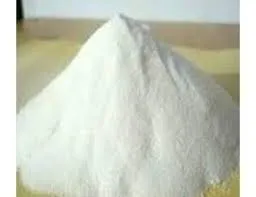
Samh . 21, 2024 09:33 Back to list
use of hpmc
The Use of HPMC A Versatile Polymer in Pharmaceutical Applications
Hydroxypropyl Methylcellulose (HPMC) is a semi-synthetic polymer derived from cellulose, a naturally occurring biopolymer. Due to its unique properties, HPMC has found extensive applications in the pharmaceutical industry, offering a wide range of uses that enhance drug formulation, delivery, and overall therapeutic effectiveness.
One of the primary uses of HPMC in pharmaceuticals is as a film-forming agent. Its ability to create stable films makes it invaluable in the production of coated tablets and capsules. The films formed by HPMC are not only flexible but also provide a barrier to moisture, thereby enhancing the stability of the drug. This is especially important for moisture-sensitive compounds that may degrade or lose potency when exposed to humidity.
The Use of HPMC A Versatile Polymer in Pharmaceutical Applications
Another significant application of HPMC is as a controlled-release agent. By adjusting the viscosity and molecular weight of HPMC, formulators can design drug delivery systems that release active ingredients at a predetermined rate. This is especially beneficial for chronic diseases requiring steady drug levels in the bloodstream, thereby improving patient compliance and therapeutic outcomes. The controlled release profiles obtained using HPMC can reduce the frequency of dosing, which is advantageous for both patients and healthcare providers.
use of hpmc

Moreover, HPMC is recognized for its role as a stabilizer in suspensions and emulsions. In liquid formulations, HPMC helps disperse insoluble ingredients evenly, preventing sedimentation and ensuring consistent dosing with every use. Its stabilizing properties are crucial in formulations that contain active pharmaceutical ingredients (APIs) that are poorly soluble in water, making it easier for these compounds to be incorporated into liquid formulations without compromising their efficacy.
In addition to its functional properties, HPMC is favored for its safety and biocompatibility. As a non-ionic polymer, it is generally regarded as safe and is well-tolerated by the human body. This makes it an excellent choice for use in a variety of pharmaceutical applications, including those involving sensitive populations such as children and the elderly.
The versatility of HPMC extends further into topical formulations, where it acts as a thickener and stabilizer in creams and gels. Its ability to improve the texture and spreadability of topical products makes it a preferred ingredient among formulators seeking to enhance user experience and product performance.
As the pharmaceutical industry continues to evolve, the demand for innovative and effective drug delivery solutions is increasing. HPMC stands out as a critical excipient in this landscape, owing to its multifunctional properties that cater to diverse formulation needs. Its application in developing personalized medicine, such as individualized dosage forms, shows promise for the future, highlighting HPMC’s adaptability in meeting the challenges of modern therapeutics.
In conclusion, Hydroxypropyl Methylcellulose is a cornerstone polymer in pharmaceutical formulations. Its diverse applications — from film-forming and binding to controlled release and stabilization — underscore its importance as an excipient that enhances drug formulation and delivery. As research continues and new applications are discovered, HPMC is likely to remain an integral component of pharmaceutical manufacturing, contributing to more effective and patient-friendly medications.
-
Versatile Hpmc Uses in Different Industries
NewsJun.19,2025
-
Redispersible Powder's Role in Enhancing Durability of Construction Products
NewsJun.19,2025
-
Hydroxyethyl Cellulose Applications Driving Green Industrial Processes
NewsJun.19,2025
-
Exploring Different Redispersible Polymer Powder
NewsJun.19,2025
-
Choosing the Right Mortar Bonding Agent
NewsJun.19,2025
-
Applications and Significance of China Hpmc in Modern Industries
NewsJun.19,2025







